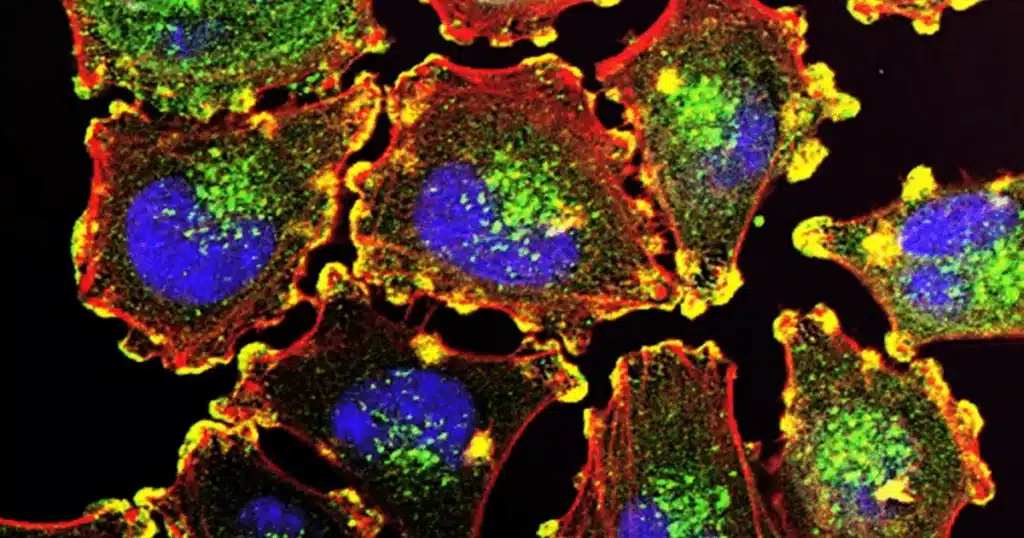Have you ever wondered what fuels the growth of cells in laboratories around the world? 🔬 Enter Minimal Essential Medium (MEM), the unsung hero of cell culture. This powerhouse solution is the lifeblood of countless scientific breakthroughs, yet many are unaware of its critical role in advancing medical research and biotechnology.
MEM provides the perfect blend of nutrients, allowing researchers to cultivate healthy cells and unlock the secrets of biology. From developing life-saving vaccines to studying complex diseases like neuroimmunology disorders, MEM is the silent partner in the lab that makes it all possible.
In this blog post, we’ll dive deep into the topic of Minimal Essential Medium. We’ll explore its composition, uncover its applications in cell culture, and reveal how scientists customize it for specific needs. You’ll also discover the practical uses of MEM in research and how it stacks up against other culture media.
Understanding Minimal Essential Medium (MEM)
Definition and Purpose
Minimal Essential Medium (MEM) is a widely used cell culture medium designed to support the growth and maintenance of various mammalian cell lines. Its primary purpose is to provide the essential nutrients and growth factors necessary for cell survival and proliferation while minimizing the presence of non-essential components.
Key Components
Minimal Essential Medium typically contains the following key components:
- Amino acids
- Vitamins
- Inorganic salts
- Glucose
- Phenol red (pH indicator)
| Component | Function |
|---|---|
| Amino acids | Building blocks for protein synthesis |
| Vitamins | Cofactors for enzymatic reactions |
| Inorganic salts | Maintain osmotic balance and pH |
| Glucose | Energy source |
| Phenol red | Visual indicator of pH changes |
Historical Development
The development of MEM can be traced back to the early 1950s when Harry Eagle, a renowned cell biologist, began his work on defining the nutritional requirements of mammalian cells in culture. His research led to the creation of several media formulations, including:
- Eagle’s Basal Medium (EBM)
- Eagle’s Minimal Essential Medium (EMEM)
- Dulbecco’s Modified Eagle’s Medium (DMEM)
MEM represents a significant milestone in cell culture technology, providing researchers with a standardized and reproducible medium for cultivating a wide range of cell types. Its development has greatly contributed to advancements in various fields, including:
- Virology
- Cancer research
- Drug discovery
- Tissue engineering
As we move forward, we’ll explore the specific composition of MEM, which builds upon this foundational understanding of its purpose and historical significance.
Composition of MEM
Minimal Essential Medium (MEM) is a carefully formulated solution designed to support cell growth and proliferation. Its composition includes several key components that work together to create an optimal environment for cell culture.
A. pH indicators and buffers
MEM typically contains phenol red as a pH indicator, which changes color based on the acidity or alkalinity of the medium. This visual cue helps researchers monitor the health of their cell cultures. The medium also includes buffers like sodium bicarbonate to maintain a stable pH, usually around 7.2-7.4, which is crucial for cell viability.
B. Glucose and other carbohydrates
Glucose serves as the primary energy source for cells in culture. MEM contains a carefully balanced concentration of glucose, typically around 1 g/L. Some formulations may include other carbohydrates like galactose or fructose to support specific cell types or research needs.
C. Vitamins and minerals
MEM is enriched with essential vitamins and minerals that cells require for various metabolic processes:
- Vitamins: B vitamins (including B1, B2, B6, and B12), folic acid, and biotin
- Minerals: Calcium, magnesium, potassium, and sodium salts
These micronutrients play crucial roles in enzyme function, cell signaling, and overall cellular health.
D. Essential amino acids
Amino acids are the building blocks of proteins, and MEM provides all the essential amino acids that cells cannot synthesize on their own. These include:
| Essential Amino Acids | Role in Cell Culture |
|---|---|
| Leucine | Protein synthesis |
| Isoleucine | Energy production |
| Valine | Cell growth |
| Lysine | Protein structure |
| Methionine | Metabolism |
| Phenylalanine | Neurotransmitter precursor |
| Threonine | Immune function |
| Tryptophan | Hormone regulation |
The precise balance of these components in MEM ensures that cells have access to all the necessary nutrients for growth and function. This carefully crafted composition makes MEM suitable for a wide range of cell types and research applications.
Now that we’ve explored the key components of MEM, let’s examine how these elements come together to support various cell culture applications.
Cell Culture Applications

MEM plays a vital role in supporting various cell types and experimental setups, but it’s essential to be aware of its limitations and advantages.
A. Limitations and considerations
While MEM is a versatile medium, it does have some limitations to keep in mind:
- Nutrient deficiency: MEM may lack certain nutrients required for specific cell types or long-term culture.
- pH sensitivity: The medium’s pH can fluctuate, potentially affecting cell growth.
- Serum requirement: Many cell lines grown in MEM require serum supplementation.
| Limitation | Impact | Mitigation |
|---|---|---|
| Nutrient deficiency | Reduced cell growth | Supplement with additional nutrients |
| pH sensitivity | Altered cell metabolism | Regular pH monitoring and adjustment |
| Serum requirement | Increased cost and variability | Use serum-free alternatives when possible |
B. Advantages in cell growth and maintenance
Despite its limitations, MEM offers several advantages for cell culture:
- Simplicity: Its basic formulation makes it easy to modify for specific needs.
- Cost-effectiveness: MEM is generally less expensive than more complex media.
- Versatility: Suitable for a wide range of cell types and applications.
- Reproducibility: The well-defined composition allows for consistent results across experiments.
C. Suitable cell types for MEM
MEM is particularly well-suited for culturing:
- Mammalian cell lines (e.g., HeLa, CHO, and VERO cells)
- Primary fibroblasts
- Keratinocytes
- Certain types of stem cells
It’s important to note that while MEM can support these cell types, optimal growth may require supplementation or modification of the base medium. Researchers should always validate the medium’s suitability for their specific cell line and experimental goals.
Next, we’ll explore how to customize MEM to meet the unique requirements of different cell types and research objectives.
Customizing MEM for Specific Needs
Now that we’ve explored the applications of MEM in cell culture, let’s delve into how researchers can tailor this versatile medium to meet specific experimental requirements.
A. Supplementation options
MEM’s flexibility allows for various supplementation options to enhance cell growth and performance:
- Amino acids: Additional amino acids like glutamine can boost cell metabolism
- Vitamins: Increased vitamin concentrations support cell proliferation
- Growth factors: Specific growth factors promote cell differentiation
- Antibiotics: Prevent bacterial contamination in long-term cultures
| Supplement | Purpose | Common Examples |
|---|---|---|
| Amino acids | Enhance metabolism | Glutamine, Alanine |
| Vitamins | Support proliferation | Vitamin B12, Folic acid |
| Growth factors | Promote differentiation | EGF, FGF |
| Antibiotics | Prevent contamination | Penicillin, Streptomycin |
B. Specialized formulations
Researchers can create specialized MEM formulations for specific cell types or experimental conditions:
- Neuronal MEM: Enhanced with neurotropic factors for brain cell cultures
- Hepatocyte MEM: Supplemented with liver-specific growth factors
- Stem cell MEM: Optimized for maintaining pluripotency or directing differentiation
C. Serum-free adaptations
To reduce variability and enhance reproducibility, serum-free MEM adaptations have been developed:
- Replace serum proteins with defined supplements
- Utilize synthetic growth factors and hormones
- Incorporate protein hydrolysates for essential nutrients
These customizations allow researchers to fine-tune MEM for optimal results in their specific experimental setups. Next, we’ll explore the practical uses of MEM in various research fields.
Practical Uses of MEM in Research
Now that we’ve explored the composition and customization of Minimal Essential Medium (MEM), let’s delve into its practical applications in various research fields.
A. Stem cell research
MEM plays a crucial role in stem cell research, providing a controlled environment for the growth and differentiation of pluripotent cells. Researchers often use MEM as a base medium, supplementing it with specific growth factors to:
- Maintain stem cell pluripotency
- Direct differentiation into specific cell types
- Study cellular reprogramming
B. Drug screening and toxicity studies

In pharmaceutical research, MEM serves as an essential tool for:
- High-throughput drug screening
- Evaluating drug efficacy on various cell types
- Assessing potential cytotoxic effects of new compounds
| Application | Benefit of using MEM |
|---|---|
| Drug screening | Provides a standardized environment for consistent results |
| Toxicity studies | Allows for precise control of nutrient levels and drug concentrations |
C. Vaccine development
MEM’s versatility makes it invaluable in vaccine research and production:
- Culturing virus-producing cell lines
- Optimizing antigen production
- Studying virus-host cell interactions
D. Cancer research applications
In oncology research, MEM supports various studies, including:
- Investigating cancer cell metabolism
- Evaluating anti-cancer drug efficacy
- Studying tumor microenvironment interactions
By providing a well-defined growth environment, MEM enables researchers to isolate and study specific aspects of cancer cell behavior and response to treatments.
As we move forward, we’ll compare MEM to other culture media to understand its unique advantages and limitations in different research contexts.
Comparing MEM to Other Culture Media
When it comes to cell culture, selecting the appropriate medium is crucial for successful experiments. Let’s compare Minimal Essential Medium (MEM) to other commonly used culture media to help you make an informed decision for your research.
Choosing the right medium for your research
Selecting the optimal culture medium depends on several factors:
- Cell type and origin
- Growth requirements
- Experiment goals
- Budget considerations
Consider the following table to help guide your decision:
| Factor | MEM | RPMI 1640 | DMEM |
|---|---|---|---|
| Cell Types | Adherent cells, primary cells | Suspension cells, blood cells | Wide range of mammalian cells |
| Glucose Content | Low | Moderate | High |
| Nutrient Richness | Basic | Moderate | Rich |
| Buffering Capacity | Moderate | Good | Excellent |
| Cost | Low | Moderate | Moderate to High |
MEM vs. RPMI 1640
Minimal Essential Medium and RPMI 1640 differ in several key aspects:
- Nutrient composition:
- MEM: Basic formulation with essential amino acids and vitamins
- RPMI 1640: Richer in nutrients, including additional amino acids and vitamins
- Cell type suitability:
- MEM: Ideal for adherent cells and primary cultures
- RPMI 1640: Better suited for suspension cells and blood cell cultures
- Buffering capacity:
- MEM: Moderate buffering capacity
- RPMI 1640: Better buffering capacity, suitable for longer-term cultures
MEM vs. DMEM
Comparing MEM to Dulbecco’s Modified Eagle Medium (DMEM):
- Nutrient content:
- MEM: Basic formulation
- DMEM: Richer in nutrients, including higher glucose and amino acid concentrations
- Cell growth support:
- MEM: Supports slower, more controlled growth
- DMEM: Promotes rapid cell proliferation
- Versatility:
- MEM: Specific for certain cell types
- DMEM: Suitable for a wider range of mammalian cells
- pH stability:
- MEM: Moderate pH stability
- DMEM: Better pH stability due to higher buffering capacity
Understanding these differences will help you choose the most appropriate medium for your specific research needs
Conclusion
Minimal Essential Medium (MEM) plays a crucial role in cell culture, offering a versatile and customizable solution for researchers across various fields. Its balanced composition of essential nutrients, amino acids, and vitamins provides the necessary foundation for maintaining and growing a wide range of cell types. From basic research to advanced applications in drug development and tissue engineering, MEM’s adaptability makes it an indispensable tool in the laboratory.
As scientists continue to push the boundaries of cellular research, the importance of selecting the right culture medium cannot be overstated. MEM’s ability to be tailored to specific cell lines and experimental requirements ensures its ongoing relevance in the ever-evolving landscape of biological sciences. By understanding the composition and applications of MEM, researchers can make informed decisions to optimize their cell culture protocols and achieve more reliable and reproducible results in their scientific endeavors.


